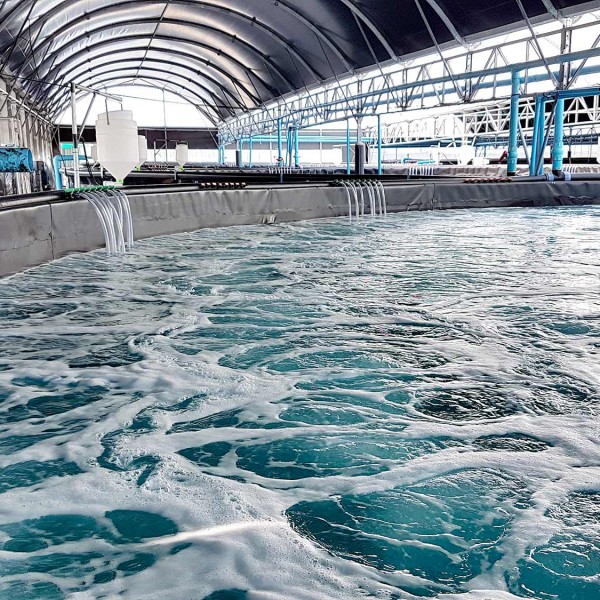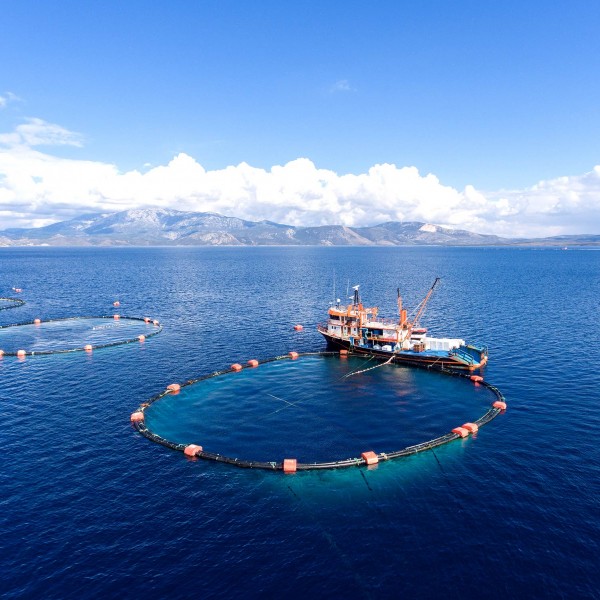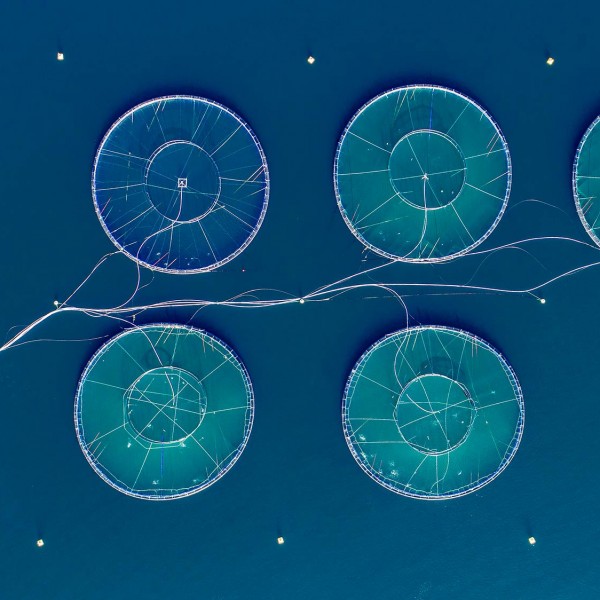Sorghum Distillers Dried Grains As An Alternative Protein Source In Diets Of Channel Catfish
Project Details
- Rebecca Lochmann
- University of Arkansas at Pine Bluff
- Year: 2016
Abstract
The overall goal of the project was to determine the potential for using different types of sorghum distiller’s dried grains with solubles as alternative protein sources in diets of channel catfish. We only received one type of sorghum DDGS. Therefore, we assessed the nutritional value of that product and two types of grain sorghum (red and white) in comparison with ingredients commonly used in fish diets (soybean meal, cottonseed meal, rice bran, wheat bran and corn DDGS). We analyzed the proximate composition (protein, lipid, starch, dry matter, ash) and estimated the available energy in the products. In addition, the amino acid composition of ingredients was obtained from a commercial lab and published sources. The fatty acid composition of the ingredients was analyzed with gas chromatography. Finally anti-nutritional factors including tannins, phytate and trypsin-inhibitor were analyzed and compared among the ingredients. Although the grain sorghum products are too low in protein to be used as a major protein source in fish diets, they could be valuable energy sources. Sorghum DDGS could be used at higher inclusion levels (30% or more) based on nutritional similarity to corn DDGS and a previous pilot study done with sorghum DDGS in catfish. However, supplemental amino acids might be required to meet all of the essential amino acid requirements. The fatty acid contents of sorghum products are quite similar to those of the other ingredients tested, and would not likely cause differences in fish performance or product quality. Of the anti-nutritional factors tested, sorghum DDGS had the lowest phytate content, but the highest tannin content. Phytate in sorghum grains was generally lower than that of the other ingredients tested, and trypsin-inhibitor was similar among ingredients. The nutrient digestibility of the sorghum ingredients needs to be established to enable further comparisons among ingredients. However, if the cost of sorghum products is lower than that of ingredients that are nutritionally similar, this preliminary data indicates there is good justification to pursue digestibility and feeding trials to confirm the value of sorghum products as feed ingredients in fish diets.
Introduction
Channel catfish (Ictalurus punctatus) is the number one cultured foodfish species in the United States, but the viability of the industry has been severely challenged by high feed costs. Cost-effective alternative protein and energy sources must be identified to improve the profitability of channel catfish production. Corn DDGS have shown some efficacy in catfish diets, but sorghum products have received almost no attention as potential feed ingredients for catfish. Sorghum DDGS are higher in protein, lower in fat and currently cheaper than corn DDGS. Therefore, we assessed the potential for using three different sorghum products (one DDGS and two grain products) in diets of channel catfish by fully characterizing the nutrient composition and analyzing the levels of key anti-nutritional factors (ANFs) that could limit their use in animal feeds. Analyzed nutrients included protein, lipid, starch, amino acids, fatty acids, dry matter and ash. ANFs that were quantified include fiber, tannins, trypsin-inhibitor and phytic acid. Several comparative tables of data were compiled to facilitate comparisons of sorghum products with other plant ingredients currently used in the aquaculture industry. The strengths and limitations of sorghum products as feed ingredients for catfish were discussed based on this data. Demonstrated efficacy of sorghum products in catfish diets is expected to lead to increased overall use of sorghum products that will benefit both the sorghum and aquaculture industries.
Methods
Dry matter and ash content of the samples were analyzed according to standard methods (AOAC 1995). Crude protein was analyzed with a Nitrogen analyzer ((Leco nitrogen analyzer TruspecTM N). Crude fiber was analyzed using an ANKOM fiber analyzer and the filter bag technique (AOCS 2005). Starch was analyzed using the Pfl?ger (1903) method modified by Good et al. (1933). Total lipid was extracted and quantified (Folch et al. 1957). Remaining lipid extract was transesterfied with 14 percent boron trifluoride. The resulting fatty acid methyl esters (FAMEs) were analyzed using a flame ionization gas chromatograph (Varian, Model CP-3800 fitted with a CP-8200 autosampler) with helium as the carrier gas. Our proposed system for amino acid analysis became unavailable. Therefore, published values for amino acids were used except for the sorghum DDGS – these data were obtained from Midwest Laboratories, Inc. (Omaha, Nebraska), with the assistance of Florentino Lopez (United Sorghum Checkoff Program). The amino acid composition of sorghum grains was obtained from Tokach et al. (year unknown), and that of the other ingredients was obtained from the NRC (2011).
Tannins were analyzed using the methods of Maxson and Rooney (1972) and Price et al. (1978) as modified by Osman (2004). Trypsin-inhibitor was analyzed according to methods of Kakade et al. (1969). Phytic acid was analyzed using methods described in Latta and Eskin (1980). Comparative tables of nutrients and ANFs were created to facilitate direct comparisons among plant feed ingredients that could possibly be replaced by sorghum DDGS or sorghum grains in fish diets. We were only able to obtain one type of sorghum DDGS. Therefore, we also tested white grain sorghum and red grain sorghum, as there is very little data on use of grain sorghum in fish diets. Other ingredients tested were soybean meal (dehulled, solvent-extracted 48% protein), corn DDGS (Dakota GoldTM, Sioux Falls, South Dakota), cottonseed meal, wheat bran and full-fat rice bran.
Results
Proximate composition of the samples is shown in Table 1. Sorghum grains are low in protein, but have modest amounts of lipid and are high in starch. Sorghum grains had the lowest fiber content of all of the tested ingredients. All of the sorghum products had estimated energy values that were comparable to those of the other ingredients. Estimated energy values were used because there are no established digestible energy values for sorghum products in catfish. The energy content of sorghum DDGS was lower than that of the other sorghum products, but it’s much higher protein level would allow it to compete with other protein feedstuffs.
Amino acid composition of the ingredients is shown in Table 2. Both sorghum grain and sorghum DDGS are lower in several essential amino acids (e.g., arginine, lysine, phenylalanine, tryptophan) compared to cottonseed meal and soybean meal. However, the methionine content of sorghum DDGS is comparable to that of cottonseed meal, and sorghum DDGS had the highest level of leucine among the ingredients tested.
Fatty acid composition of the ingredients is shown in Table 3. Only the fatty acids that were present at 0.5 percent or higher in most ingredients were included to simplify comparisons. The principal fatty acids in all ingredients were 16:0, 18:1 and 18:2n-6. Although some differences in concentrations of these fatty acids were apparent among the ingredients, there were more similarities than differences and no major imbalances were apparent.
The concentrations of tannins, trypsin-inhibitor and phytate in the ingredients are shown in Table 4. Sorghum DDGS had the lowest phytate content, but the highest tannin content. Phytate in sorghum grains was generally lower than that of the other ingredients tested, and trypsin-inhibitor was similar among ingredients.
Discussion
Based on data generated for the ingredients in this study, sorghum grains would be a viable substitute for other common energy ingredients such as corn or rice bran in fish diets. Both sorghum grains were high in starch (a highly digestible energy source) and low in fiber. Fiber is considered an anti-nutritional factor as it is known to reduce the nutrient digestibility of the diet (Guimaraes et al. 2008). The red sorghum was higher in tannins and phytate than the white sorghum, so additional studies would be needed to see if these properties would limit use of red sorghum in fish diets. Sorghum DDGS had the highest level of tannins of the ingredients tested. Tannins complex with proteins such as digestive enzymes (Guillaume and Metailler 1999). However, sensitivity of catfish to tannins is not well documented. The low phytate content of sorghum DDGS would be beneficial, as phytate is known to reduce bioavailability of phosphorus and zinc in fish diets (NRC 2011). Sorghum DDGS had a much higher protein content than the grains (and also the corn DDGS), and could be considered as a major protein feedstuff in fish diets. Although sorghum DDGS was lower in lipids than corn DDGS, that would not be a limiting factor in catfish diets, since the total lipid content is usually 6% or less. The fatty acids in sorghum grain and sorghum DDGS are similar to those of other plant ingredients used widely in catfish diets, and would not expect to have a negative impact either on fish performance or product quality. Catfish diets are usually supplemented with a source of essential n-3 fatty acids, since most commercial plant feedstuffs used in catfish diets contain n-6 fatty acids predominantly.
Given the nutritional similarity between sorghum DDGS and corn DDGS, it is possible that inclusion levels of 30 percent or more sorghum DDGS could be substituted for other ingredients in catfish diets. There is very little published literature on sorghum in catfish diets and none on the DDGS form as a protein source. However, In 2011, we conducted a pilot study with channel catfish fingerlings using diets with 0, 15 percent or 30 percent corn or sorghum DDGS. The diets were formulated to meet the macro-nutrient requirements of channel catfish (NRC 2011), but the essential amino acid content of the DDGS products were unknown. We did not use any supplemental amino acids in the trial and anticipated some decline in catfish performance at the higher level (30 percent) of DDGS for both corn and sorghum. However, this did not occur. The amino acid composition of sorghum DDGS in the current study indicates that it is deficient in several essential amino acids (EAA) compared to soybean meal. Possibly, the use of multiple feed ingredients with complimentary amino acid profiles can compensate for the lack of some EAA in sorghum DDGS. This could warrant higher inclusion rates of the sorghum product if it is cheaper than nutritionally similar products such as corn DDGS.
The development of new economical feed ingredients for catfish diets using sorghum by-products should enhance the profitability of both industries. Overall, sales and demand for catfish in the U.S. have remained relatively stable even in this distressed economy. It is likely that demand for catfish (and all seafood) in the U.S. will increase as the economy begins to recover. Due to increased seafood inspection and food safety regulations that will apply to both domestic and imported products, the U.S. catfish industry should also enjoy renewed growth due to the inability of major foreign competitors (e.g., China, Vietnam) to comply with high standards of food safety.
Renewed growth of the catfish industry will require the use of cost-effective feed ingredients and plant-protein sources, such as sorghum grain and DDGS are also considered environmentally sustainable to use in animal feeds. However, nutrient digestibility trials and additional feeding trials must be conducted to determine the full potential for use of grain sorghum and sorghum DDGS in catfish diets compared to more traditional plant-based diets with soybean meal as the main protein source.
References
Association of Official Analytical Chemists (AOAC), 1995. Official Methods of Analysis of the AOAC International, 16th edition. AOAC International, Arlington, VA, 1832 pp.
AOCS (American Oil Chemists’ Society). 2005. Crude fiber analysis in feeds by filter bag technique. AOCS approved procedure Ba 6a-05. Official method and recommended practices, 4th edition. AOCS, Arlington, Virginia.
Folch, J., Lees, M., Sloane-Stanley, G-H., 1957. A simple method for the isolation and purification of total lipids from animal tissues. Journal of Biological Chemistry 226: 497- 509.
Good, C.A., H. Kramer, and M. Somogyi. 1933. The determination of glycogen. Journal of Biological Chemistry 100:485-491.
Guillaume, J. and R. Metailler. 1999. Antinutritional factors. Pages 297–307 in J. Guillaume, S. Kaushik, P. Bergot, and R. M ?etailler, editors. Nutrition and feeding of fish and crustaceans. Praxis publishing Ltd INRA/IFREMER, Chichester, UK.
Guimaraes, I. G., L. E. Pezzato, M. M. Barros, and L. Tachibana. 2008. Nutrient digestibility of cereal grain products and by-products in extruded diets for Nile tilapia. Journal of the World Aquaculture Society 39:781-789.
Kakade, M.L., N. Simons, and I.E. Liener. 1969. An evaluation of natural vs. synthetic substrates for measuring the antitryptic activity of soybean samples. Cereal Chemistry Journal 46:518-526.
Latta, M., and M. Eskin. 1980. A simple and rapid colorimetric method for phytate determination. Journal of Agricultural and Food Chemistry 28:1313-1315.
Maxson, E.D., and L.W. Rooney. 1972. Evaluation of methods for tannin analysis in sorghum grain. American Association of Cereal Chemists 49: 719-729.
NRC (National Research Council), 2011. Nutrient Requirements of Fish and Shrimp. National Academy Press, Washington, D.C., 360 pp.
Osman, M.A. 2004. Changes in sorghum enzyme inhibitors, phytic acid, tannins and in vitro protein digestibility occurring during Khamir (local bread) fermentation. Food Chemistry 88:129-134.
Pfl?ger, E.F.W. 1905. Das glycogen und seine Beziehungen zur Zuckerkrankheit. Stephan Geibel and Co., Altenburg, Germany. 2nd edition: 188-189
Price, M.L., S.V. Scoyoc, and L.G. Butler. 1978. A Critical evaluation of the vanillin reaction as an assay for tannin in sorghum grain. Journal of Agriculture Food Chemistry 26:1214- 1218.
Serrano, J.A., G.R. Nematipour, and D.M. Gatlin, III. 1992. Dietary protein requirement of the red drum (Sciaenops ocellatus) and relative use of dietary carbohydrate and lipid. Aquaculture 101:283-291.
Tokach, M., B. Goodband, and J. DeRouchey. Year unknown. Sorghum in Swine Production Feeding Guide. Kansas State University, Manhattan, Kansas. United Sorghum Checkoff Program.




